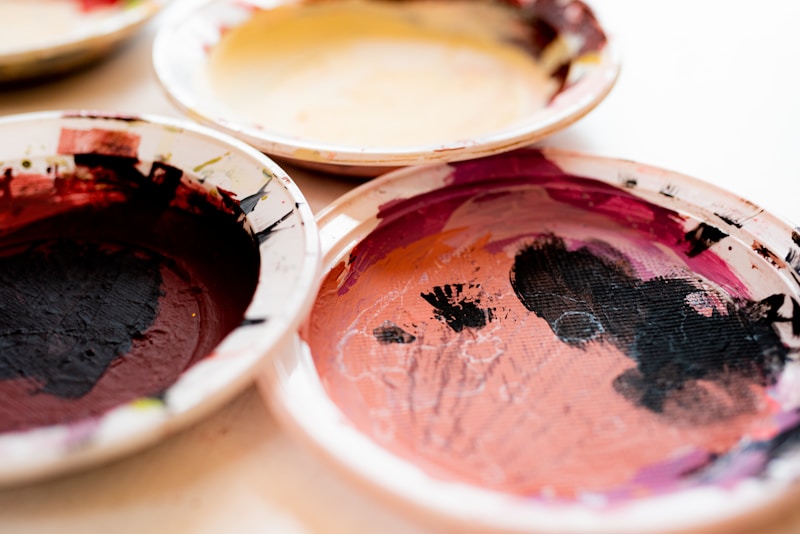Exploring the Artistry in Dress Construction: A Comprehensive Guide
Introduction
Dress construction is not just about sewing fabric together; it’s an intricate blend of design, technique, and creativity. The artistry in dress construction influences not only the final look of a garment but also its fit, style, and overall aesthetic appeal. In this article, we will dive deep into the various aspects of dress construction, exploring techniques, materials, and inspirations that culminate in beautiful pieces of wearable art.
Understanding the Basics of Dress Construction
Before we delve into the artistry involved, it’s essential to understand the basic elements of dress construction. The process typically involves the following stages:
| Stage | Description |
| 1. Design | Creating a blueprint or sketch of the garment. |
| 2. Pattern Making | Drafting patterns that will guide the cutting and sewing of fabric. |
| 3. Fabric Selection | Choosing the right fabric, considering texture, weight, and drape. |
| 4. Cutting | Carefully cutting the fabric according to the patterns. |
| 5. Sewing | Assembling the pieces together using various stitching techniques. |
| 6. Fitting | Making adjustments to ensure an ideal fit for the wearer. |
| 7. Finishing | Adding final touches, such as hems and closures. |
The Role of Design in Dress Construction
The design phase is where artistry truly begins. Fashion designers often draw inspiration from various sources, including historical fashion, art movements, cultural elements, and nature. A successful design captures the essence of the intended look while considering the wearer’s personality and preferences.
Many renowned designers have left their mark on the world of fashion through innovative designs. For example, Coco Chanel revolutionized women’s fashion by introducing comfort and elegance that transcended tradition. Understanding these influences can help new designers discover their unique voice in dress construction.
Techniques Used in Dress Construction
Mastering various techniques is vital for any dressmaker aiming to elevate their artistry. Some popular techniques include:
- Flat patternmaking: This method involves creating patterns from flat fabric pieces, allowing for precise shaping.
- Draping: A three-dimensional technique where fabric is pinned and sewn on a dress form to achieve desired shapes and designs.
- Tailoring: A technique focusing on creating structured garments, often involving complex sewing methods to achieve a perfect fit.
- Embroidery and embellishments: Adding decorative elements that enhance the overall design and contribute to the garment’s uniqueness.
Choosing the Right Fabrics
The choice of fabric plays a critical role in the construction and final appearance of the dress. Different fabrics have unique characteristics that affect how they’re sewn and how they drape on the body. Here are some popular choices:
- Cotton: A versatile fabric, ideal for casual dresses.
- Satin: A luxurious choice suitable for evening wear, known for its smooth finish.
- Linen: Perfect for summer attire, offering breathability and a rustic charm.
- Silk: A delicate and high-end fabric that provides an elegant drape.
Innovative Tools and Technology in Dress Construction
Technology has also transformed dress construction, introducing innovative tools that enhance precision and creativity. Computer-aided design (CAD) software allows designers to create detailed patterns and visualize their designs before cutting fabric. Moreover, digital printing technologies enable the creation of unique fabric patterns, providing infinite possibilities for customization.
Inspiration Behind Dress Construction
Artists and designers often draw inspiration from diverse fields. Nature, architecture, and even technology can spark creativity. For instance, the fluid lines of a flower may inspire a gown's silhouette, while modern architecture could influence structural details. Engaging with various art forms can provide a broader perspective, enriching a designer’s artistic vocabulary.

The Importance of Fitting and Tailoring
A dress may be beautifully designed, but without proper fitting, it won’t achieve its full potential. Tailoring involves adjusting the garment to fit the wearer’s body, creating a flattering and comfortable experience. This step often requires a keen eye and skillful hands, ensuring the dress accentuates the wearer’s best features while allowing freedom of movement.
Creative Trends in Dress Construction
The world of fashion is constantly evolving, with trends that reflect societal changes, cultural shifts, and technological advancements. Sustainable fashion, for example, has become a significant focus, promoting the use of eco-friendly materials and ethical manufacturing processes. Designers are now merging artistry in dress construction with sustainability, creating pieces that are not only beautiful but also mindful of the environment.
Challenges in Dress Construction
While dress construction is a rewarding endeavor, it comes with its challenges. One common issue designers face is achieving the desired balance between creativity and marketability. A design might be innovative and artistic but may not appeal to the broader consumer base. Thus, designers must navigate the fine line between expressive artistry and commercial viability.
Conclusion
Artistry in dress construction encompasses a vast array of practices, techniques, and inspirations. By merging creativity with technical skill, designers can create garments that are not just clothing but works of art. As the fashion landscape continues to evolve, embracing trends like sustainability and technological innovation will be vital. Aspiring designers should keep in mind the importance of a solid foundational knowledge in construction techniques while allowing their creativity to flourish. Ultimately, the artistry in dress construction is not just about aesthetic appeal; it reflects the values, culture, and artistry of society as a whole.
Whether you are a designer, a fashion enthusiast, or someone curious about the craft, understanding the artistry behind dress construction opens up new avenues of appreciation for this remarkable field. Always remember that each stitch tells a story, and every garment embodies the creativity and passion of its maker.